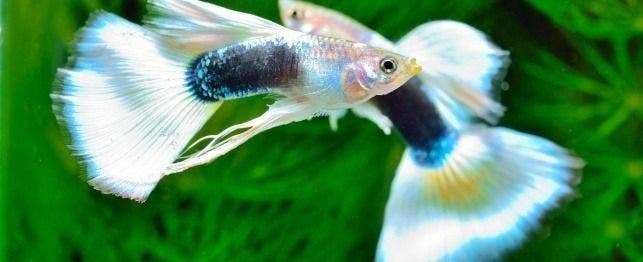
Chlorine Toxicity
Chlorine in water reacts with living tissues and organic matter causing acute necrosis (cell death) in fish. Since fish gills are sensitive and exposed directly to the aquatic environment, gill necrosis can lead to respiratory difficulty and asphyxiation.
Most municipal water companies sterilize their water with chlorine or chloramine, a combination of chlorine and ammonia, for safe human consumption. While relatively harmless to humans, chlorine can be deadly to fish. The amount of chlorine in tap water may fluctuate, but it is usually between 0.5 and 2.0 parts per million (ppm).
Chlorine poisoning is usually caused by inexperienced fish hobbyists either putting fish in unconditioned common tapwater, or displacing a large amount of tank water with unconditioned chlorinated water. One common scenario is when a koi or goldfish pond owner “tops off” his pond and forgets to turn off the garden hose. Too much unconditioned water gets into the pond and the fish die. Even unrinsed chlorine sterilized utensils (nets, sponges, filters) may can cause acute high morbidity and mortality.
Chlorine poisoned fish appear very stressed and how quickly they get sick and die depends on the level of chlorine in the water. High levels may cause fish to succumb in hours or even minutes. Generally speaking, smaller fish are more susceptible than larger fish.
Affected fish may appear pale and covered in mucus. Some will exhibit hyperemia (redness) on various parts of their body and behaviorally, fish may be piping at the surface for air and swimming erratically.
Chlorine can be “bubbled” out of water if the water is well aerated for several days in a container with a large surface area. Unlike straight chlorine, chloramine does not produce trihalomethanes that are toxic to humans, which is why it has become much more popular than chlorine in public water supplies. Chloramine is more stable in water than chlorine and cannot be efficiently bubbled out of standing water.
Regarding diagnosis, many toxic conditions resemble chlorine poisoning (ammonia, copper, organophosphates). An accurate history will usually rule these other problems out. Hypoxia due to overcrowding or poor aeration can also resemble chlorine toxicity.
There are a number of manufacturers that make chlorine test kits. Sophisticated water testing laboratories have a device called a chlorine titrimeter. In most cases chlorine toxicity can be diagnosed by the history and clinical signs alone.
Veterinary Care
Severely affected fish usually die. Fish that are quickly removed from contaminated water may survive if they are not showing signs of respiratory distress within a three to six hour period following exposure.
To try to fix the situation, the contaminated water must be neutralized immediately, or the fish must be removed to an aquarium or other vessel containing clean, chlorine-free water. A number of commercially available compounds quickly and safely remove chlorine from water. These products frequently contain sodium thiosulfate which inactivates chlorine through a chemical reaction in which sodium chloride is formed. Sodium thiosulfate is inexpensive, effective and safe (just ten grams of sodium thiosulfate will remove the chlorine from 1000 liters of municipal water with chlorine concentrations as high as 2.0 ppm).
After the chlorine has been removed, the water containing the fish should be aerated well with room air or preferably 100 percent oxygen. Temperate species like goldfish and koi will benefit from reducing the water temperature to increase the dissolved oxygen levels. When possible or practical, administering dexamethasone intravenously or intracoelomically at a dose of 2.0 mg/kg every 12 hours may improve the prognosis.
Follow-up Care
Since chlorine poisoning is almost always an acute problem, follow-up consists primarily of supportive care for the sick fish and prevention with regards to keeping chlorinated water away from the fish.